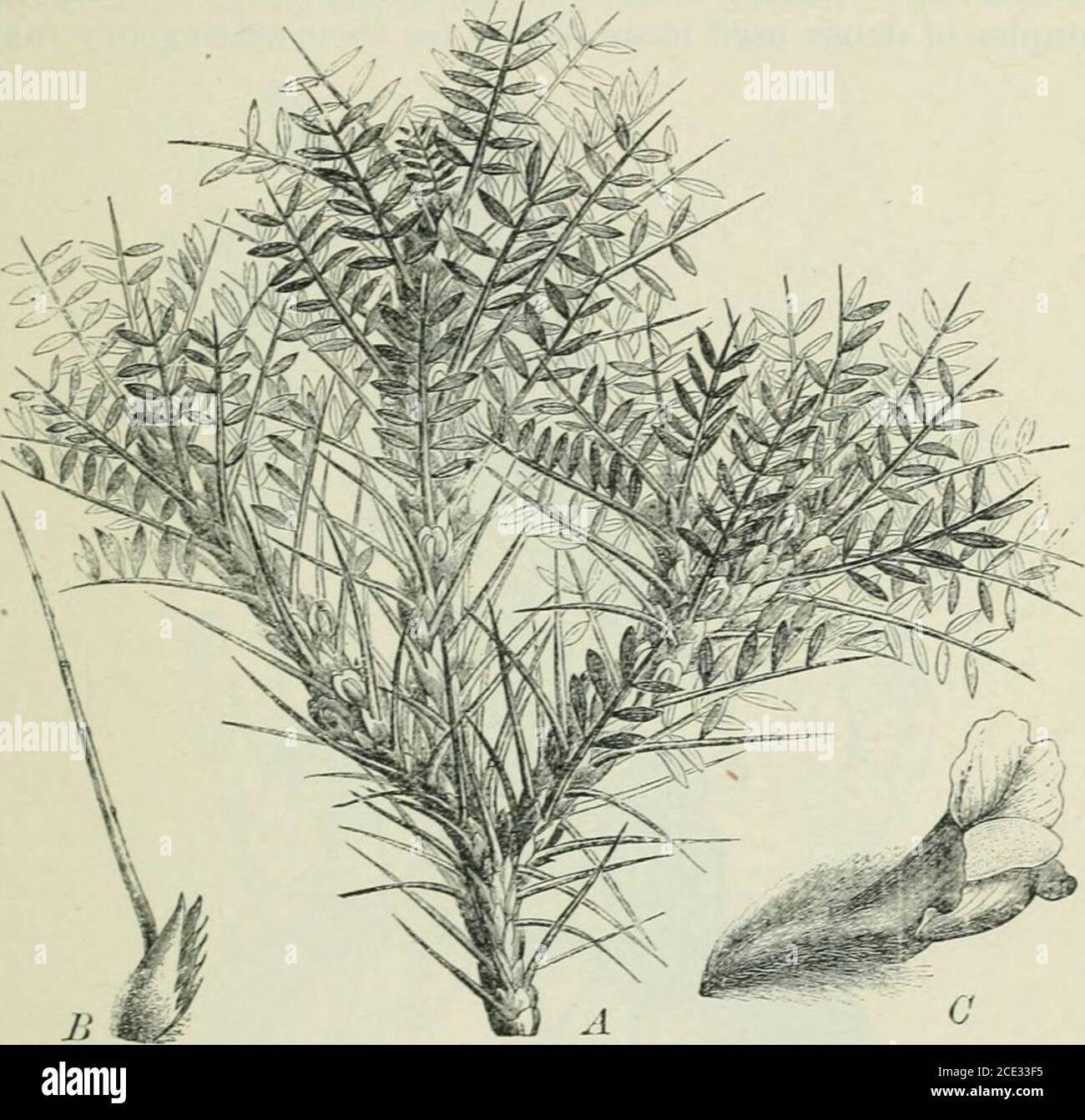. Plants and their uses; an introduction to botany . half, showing seeds. D, seed,cut between the seed-leaves to show seed-stem and seed-bud. E, seed,cut acro.ss. (Taubert.)—. tree about G m. tall; bark gray; leavesgrayi.sh; flowers yellow: pod yellowish. Native homo, troijical Africa.This tree yields the best gum; several other species produce an inferiorquality. (Fig. 157) and related species. The root of the marshmallow(Fig. 158) contains about one-third of its weight of a mucilage,having the same formula as tragacanthin. The same formulais given also to the mucilage yielded copiou.sly by

Image details
Contributor:
Reading Room 2020 / Alamy Stock PhotoImage ID:
2CE33F5File size:
7.2 MB (360.8 KB Compressed download)Releases:
Model - no | Property - noDo I need a release?Dimensions:
1611 x 1552 px | 27.3 x 26.3 cm | 10.7 x 10.3 inches | 150dpiMore information:
This image is a public domain image, which means either that copyright has expired in the image or the copyright holder has waived their copyright. Alamy charges you a fee for access to the high resolution copy of the image.
This image could have imperfections as it’s either historical or reportage.
. Plants and their uses; an introduction to botany . half, showing seeds. D, seed, cut between the seed-leaves to show seed-stem and seed-bud. E, seed, cut acro.ss. (Taubert.)—. tree about G m. tall; bark gray; leavesgrayi.sh; flowers yellow: pod yellowish. Native homo, troijical Africa.This tree yields the best gum; several other species produce an inferiorquality. (Fig. 157) and related species. The root of the marshmallow(Fig. 158) contains about one-third of its weight of a mucilage, having the same formula as tragacanthin. The same formulais given also to the mucilage yielded copiou.sly by the outercoat of the flaxseed (Fig. 279). A similar mucilage but withthe formula CisH., sOi4 is obtained in large quantities fromthe outer coat of quince seed (Fig. 93). The slipperiness of N0X-P()IS0X0U8 DRUCiS 1G5 the inner bark of our slippery elm and the closely similarEnglish elm (Fig. 159) is clue to the large amount of a muci-laginous carbohydrate which it contains. The pith of sassa-fras (Fig. 160J yields to hot water a similar mucilage.. Flu. 157.—Tragacanth .Shrul) (Astragalu.i gummifer. Pulse Family, Legumi-nosw). A, flo<Nering branch. B, leaf from which the leaflets have dis-appeared, leaving only the .stiff thorn-like rachis and the toothedstipules, C, flower. (Taubert.)—A shrub .30-60 cm. tall; flowersyellow; pod, small, one-seeded. Native home, Southwestern Asia. The jelh-like constituent of the lichen called Iceland moss(Fig. 161) is a carbohydrate known as lichenin or lichen-starch (Ci., H2„0]„). It is in.soluble in cold water but be-comes dissolved upon boiling, and forms a jelly when cooled.Lichenin is almost if not quite identical with the gelatinousconstituent of carrageen or Irish moss (Fig. 118) which wehave alreadv studied. The chief remedial constituent found 106 MEDICINAL AND POISONOUS PLANTS in the root of the Hcorice plant (Fio-. 162) is a bitter-sweet, yellowish compound forming a jelly with water. The astringents present in vegetable drug